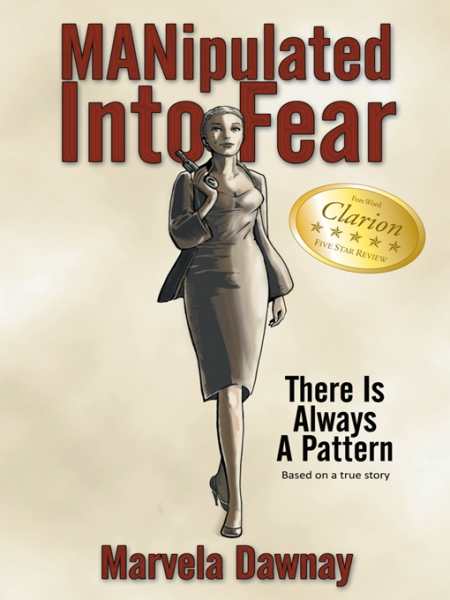MANipulated into Fear
There Is Always a Pattern
One of the more hidden forms of abuse comes when a romantic partner, parent, or boss creates a hostile environment by preying on a person’s fears or self-doubt. This type of emotional abuse can be devastating and have long-lasting effects. Because it may lack the physical component of violence, a victim can suffer for years before recognizing the abuse.
For Marvela Dawnay, abuse consumed her life after she married Rolf, a former high-school classmate who exuded charm and respectfulness. Seemingly a dedicated Christian and loving boyfriend, Rolf appeared to be the perfect mate, but Dawnay soon discovered how much he’d been hiding from her, including his drug and alcohol abuse. Rolf started manipulating her, learning what she feared most and using that knowledge to keep her under his control. So pervasive was his reach that even after she divorced him, she was lured back again, marrying and divorcing him three times within thirteen years.
“Often, women like myself do not know they are being manipulated into fear,” she writes. “We do not even realize that we really are afraid of the person, because we have adapted to this way of life.”
Dawnay’s story, MANipulated into Fear: There is Always a Pattern, will resonate with those who have endured similar abuse. The constant phone calls so the abuser can “check up” on the victim, the controlling behavior, and the effort to keep the victim away from friends and family are classic behaviors that can be difficult for an outsider to detect, since such a relationship tends to look healthy when the couple is in public. In a voice that is raw with emotion, Dawnay provides valuable insight into her experience.
In sharing her story, Dawnay aims to help prevent other women from falling into a similar pattern of abuse. That impetus is clear in the no-nonsense, focused fury of her writing style. In a narrative that’s primarily chronological, Dawnay artfully describes how each new start with Rolf began with hope and ended with fear and desperation. She recalls her thoughts and feelings at the time of the first divorce proceedings: “I did not even want to look at him. He had used me again, and I knew that he really never loved me … At the time I did not know it, but he was a manipulating con psychopath.”
The reader is likely to feel protective emotions toward the author, whose eagerness for a loving home and whose empathetic personality shine through even the book’s darkest passages.
The book’s cover offers a single strong illustration of a woman who is crying but also striding confidently forward. Back cover copy is similarly stripped of flourish, with a simple description of Dawnay’s tale that pairs well with the main, front image, drawing the reader to explore further.
Dawnay’s decision to tell all of the details of her journey is brave and inspiring. She sheds light on psychopathic behavior, providing insight for those who may be in an abusive relationship.
Heartbreaking and deeply personal, Dawnay’s story could serve as a much-needed wake-up call for others.
Reviewed by
Elizabeth Millard
Disclosure: This article is not an endorsement, but a review. The publisher of this book provided free copies of the book and paid a small fee to have their book reviewed by a professional reviewer. Foreword Reviews and Clarion Reviews make no guarantee that the publisher will receive a positive review. Foreword Magazine, Inc. is disclosing this in accordance with the Federal Trade Commission’s 16 CFR, Part 255.

